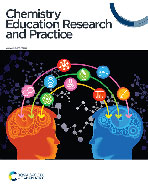Change in students’ explanation of the shape of snowflakes after collaborative immersive virtual reality
Abstract
In recent years, chemistry educators are increasingly adopting immersive virtual reality (IVR) technology to help learners visualise molecular interactions. However, educational studies on IVR mostly investigated its usability and user perceptions leaving out its impact on improving conceptual understanding. If they evaluated students’ knowledge gains, they tended to use information recall tests to assess knowledge gains. Employing interviews and diagram-drawing tasks, this study explored how students’ conceptual understanding of the nature of hydrogen bonds and the shape of snowflakes changed through a collaborative IVR experience on snowflakes. Participants were 68 undergraduate chemistry students. Videos of pre-/post-interviews and student-generated diagrams were analysed. The results indicated a marked improvement in students’ conceptual understanding of the nature of hydrogen bonds among water molecules in snowflakes. After IVR, 57 students provided scientifically acceptable explanations of the nature of hydrogen bonds. Improvements in students’ understanding were related to the intermolecular nature of hydrogen bonds, the role of lone pairs of electrons in forming hydrogen bonds, and molecular interactions in 3D space. This study suggests that collaborative IVR could be a powerful way for students to visualise molecular interactions, examine their alternative conceptions, and build more coherent understanding. Implications for the design and implementation of IVR activities for science learning are discussed.


 Please wait while we load your content...
Please wait while we load your content...